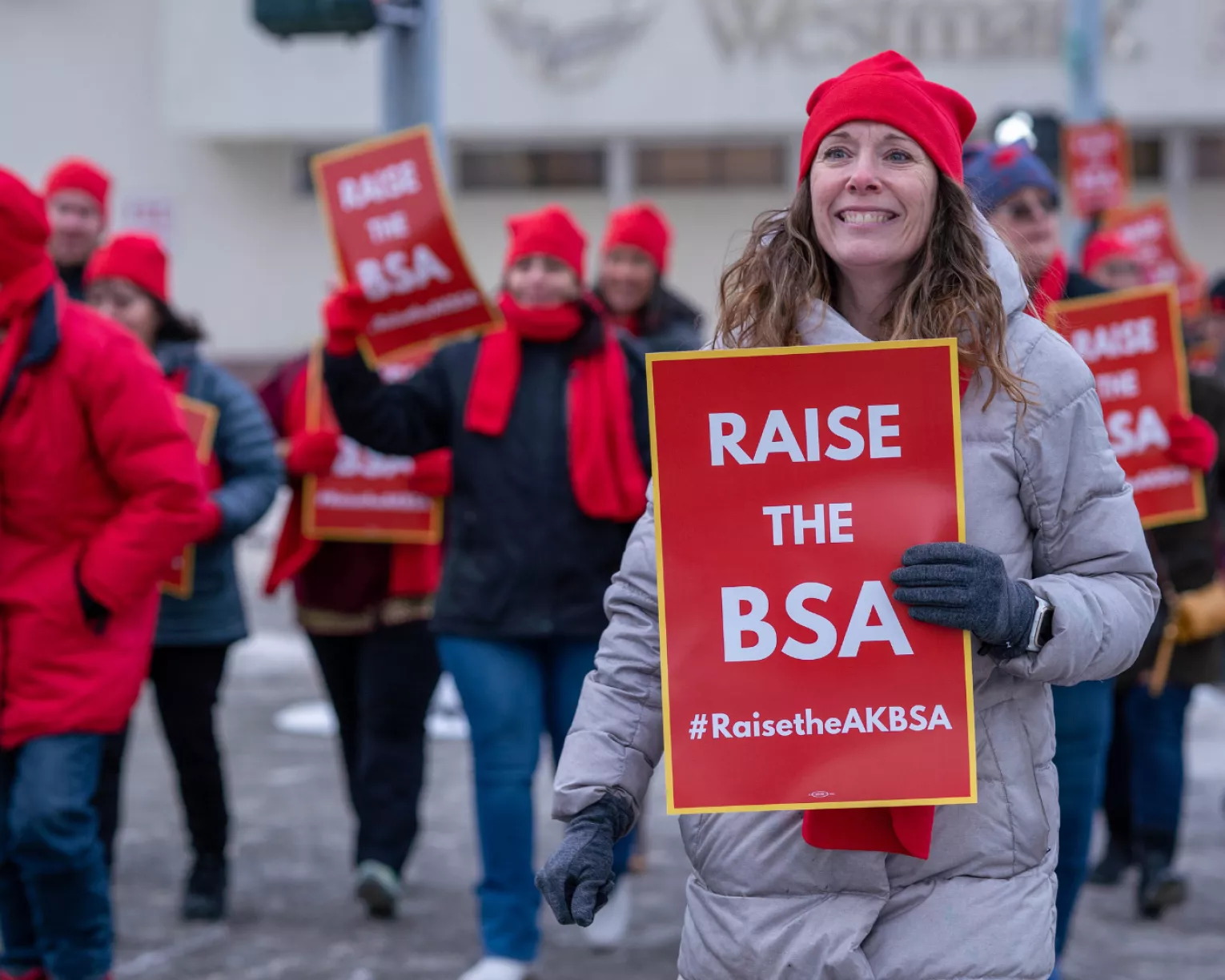Political subdivisions of the state—school districts or municipal governments—can join Social Security with a modification to the state of Alaska “Section 218 Master Agreement.” To individually choose whether or not they return to Social Security, a school district can allow TRS employees to hold a “divided vote.”
The Process
First, a local school board must pass a resolution calling for a “divided vote” of TRS members. This means your local school board needs to understand how important a more secure retirement is for Alaska TRS members and be willing to invest in it.
If a School Board were to pass a resolution calling for a divided vote to allow employees to elect whether or not – a 90 day education period would commence. The State Social Security Administrator would offer resources and information to help each employee determine whether or not it made sense for them to vote themselves back into Social Security.
Next, each TRS member can vote to re-enroll themselves in Social Security – or elect not to vote themselves into Social Security. NEA-Alaska research leads us to believe that in most cases anyone who voted themselves back into Social Security would still be subject to the GPO-WEP. Each individual would have a number of variables to consider and need to fully understand the implications of, including the GPO-WEP when determining whether or not it made sense to vote to join Social Security.
Frequently Asked Questions
What are the costs associated with enrolling in Social Security?
Total cost of Social Security coverage is 12.4% of gross Social Security wages.
-
Employer pays 6.2%
-
Employee pays 6.2%
What would I want to know to determine if it made sense to vote to return to Social Security?
-
How many years have I already worked in Social Security jobs?
-
How many years do I plan to work?
-
What does the GPO-WEP look like for me? (If you get to 30 years in SS you can fully escape the GPO-WEP penalties)
Things to remember and research about Social Security coverage:
-
Social Security also provides disability and survivor benefits – it is worth it to fully understand what benefits are included in Social Security coverage. See Social Security FAQs here
-
Each TRS member has a very specific and personal set of circumstances when it comes to acceptance of risk, time in Social Security, potential benefits, other retirement assets.
-
The Social Security credits you earn also count toward eligibility for Medicare when you reach age 65. Enrollment in Social Security may help you be eligible for Medicare at an earlier age.
What is a “divided vote”?
A key feature of the of is the opportunity to hold a “divided vote” at a local school board. This means Jane can vote “no” and elect not to join Social Security. But, John can vote “yes” and elect to join Social Security. When Jane retires, the new hire filling her position will be enrolled in Social Security.
A “divided vote”
-
“No” votes do not enroll in Social Security.
-
“Yes” votes enroll in Social Security immediately.
-
All positions are eventually covered – new hires are all enrolled in Social Security.
What does the voting process for a divided vote look like?
-
Local school board must pass a resolution to hold a vote.
-
Mandatory 90-day education period for voting employees.
-
Social Security Administration and TRS counselors educate, Social Security Administration works with entity only.
-
Social Security Administration creates ballots, holds, and certifies the vote.
-
Social Security Administration creates the modification to the SOA Section 218 agreement and sends the modification to Social Security Administration for approval.
-
Social Security deductions start on the effective date of modification for TRS employees who voted for enrollment.
Use Your Educator Voice.
